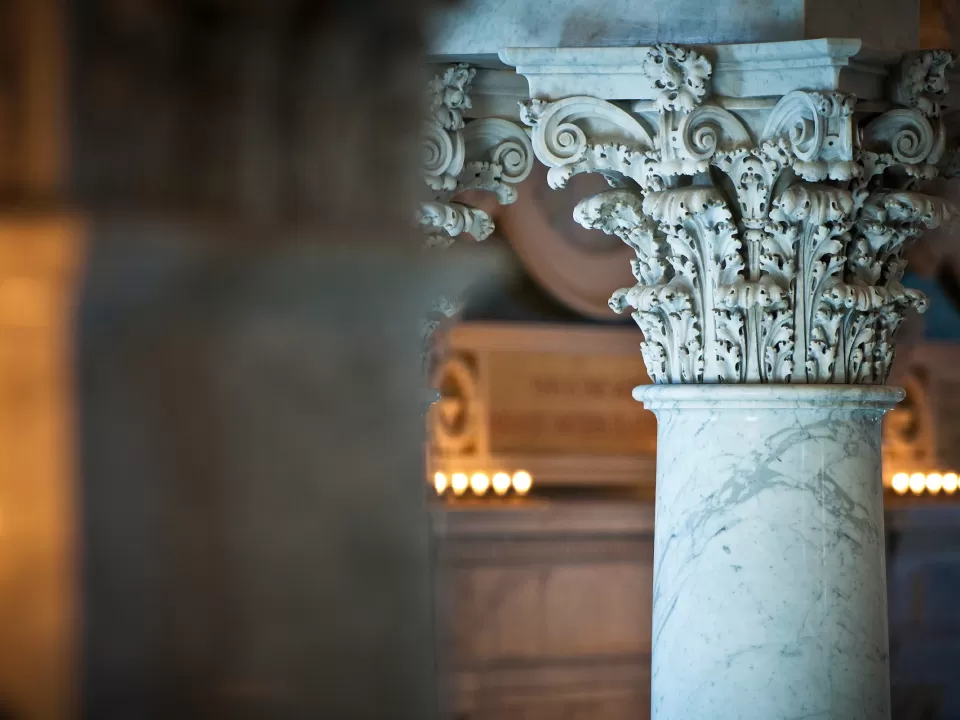
Highlight
Corinthian Columns
Corinthian columns are the most ornate, slender and sleek of the three Greek orders.
Image Gallery
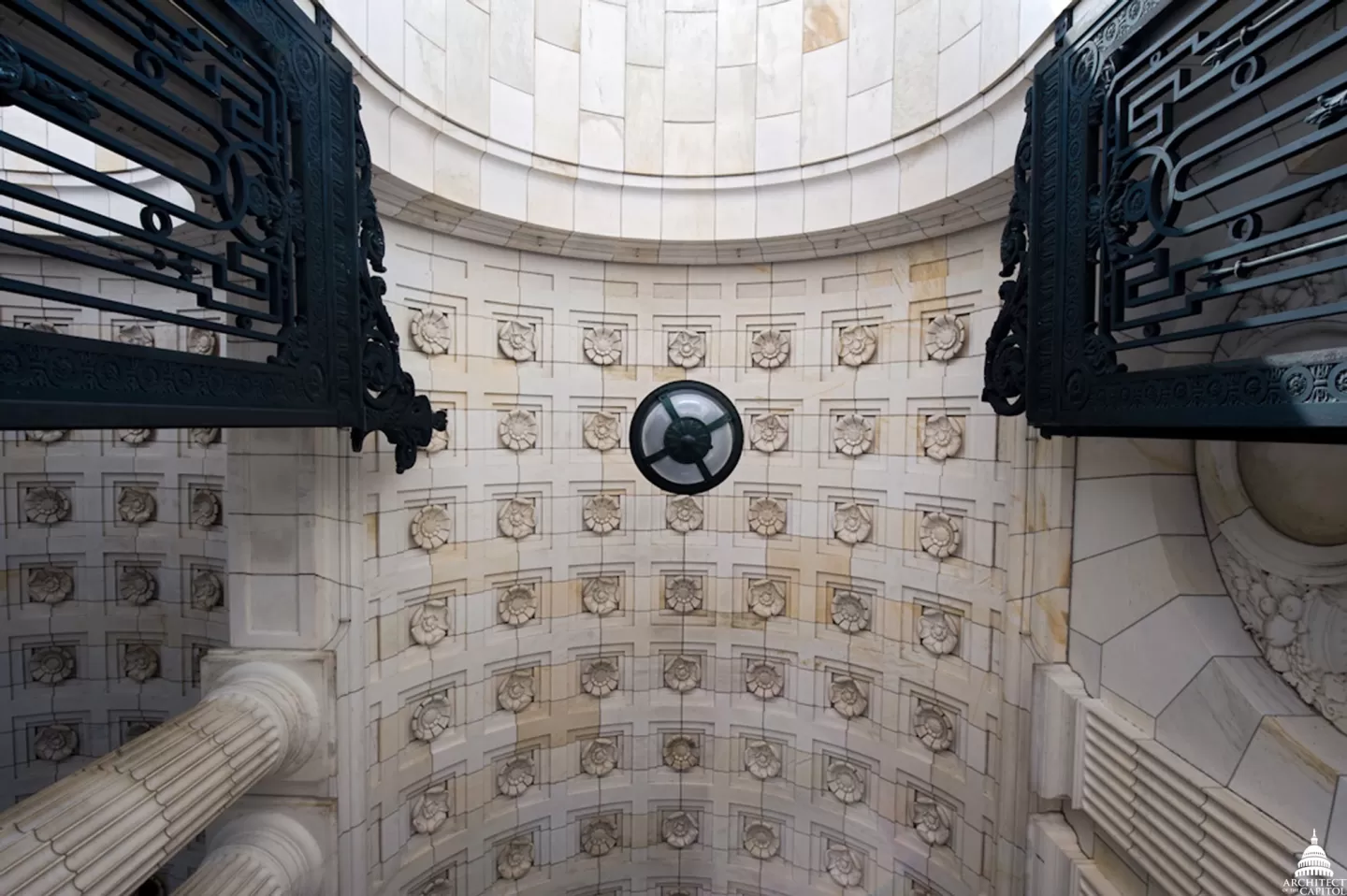
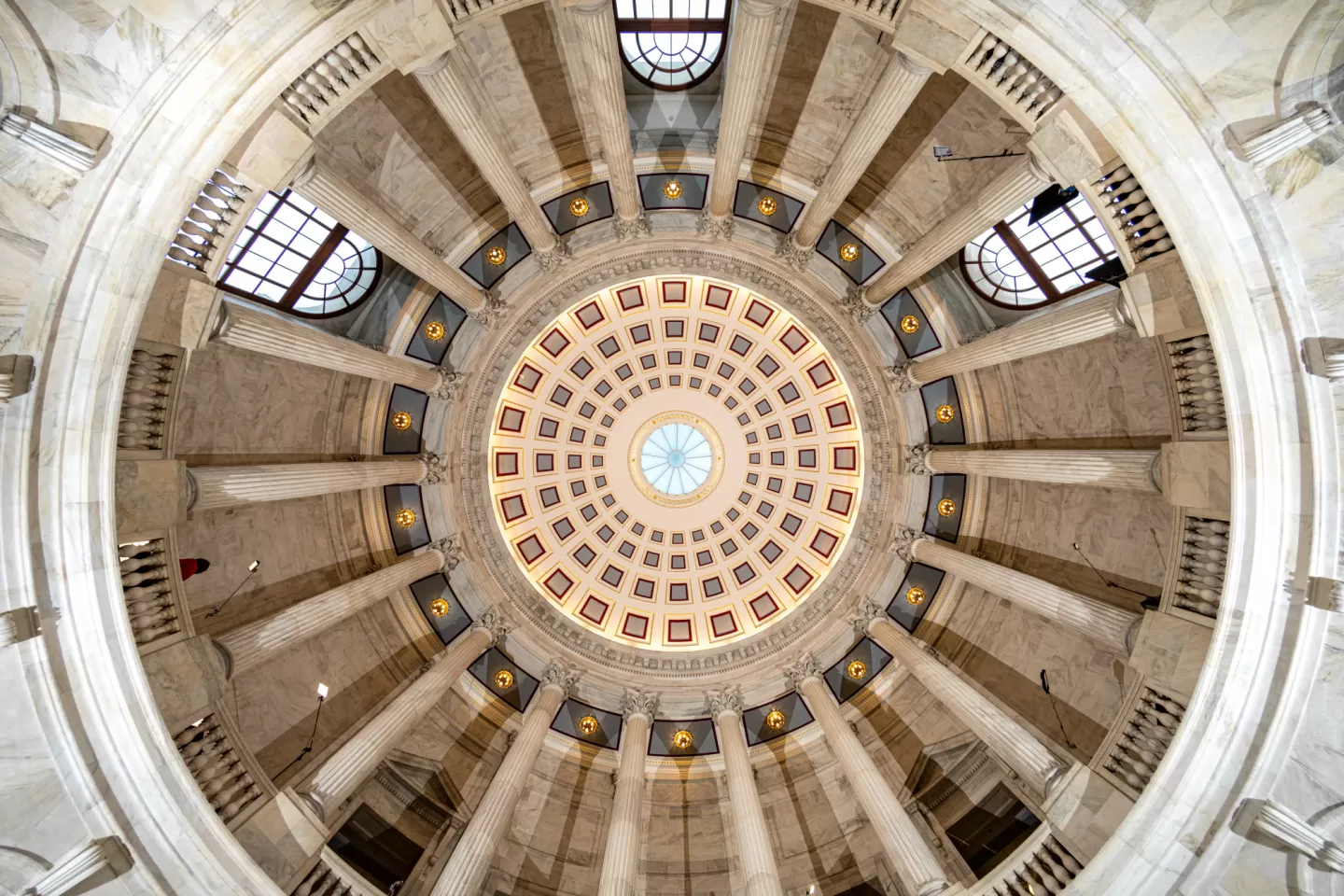
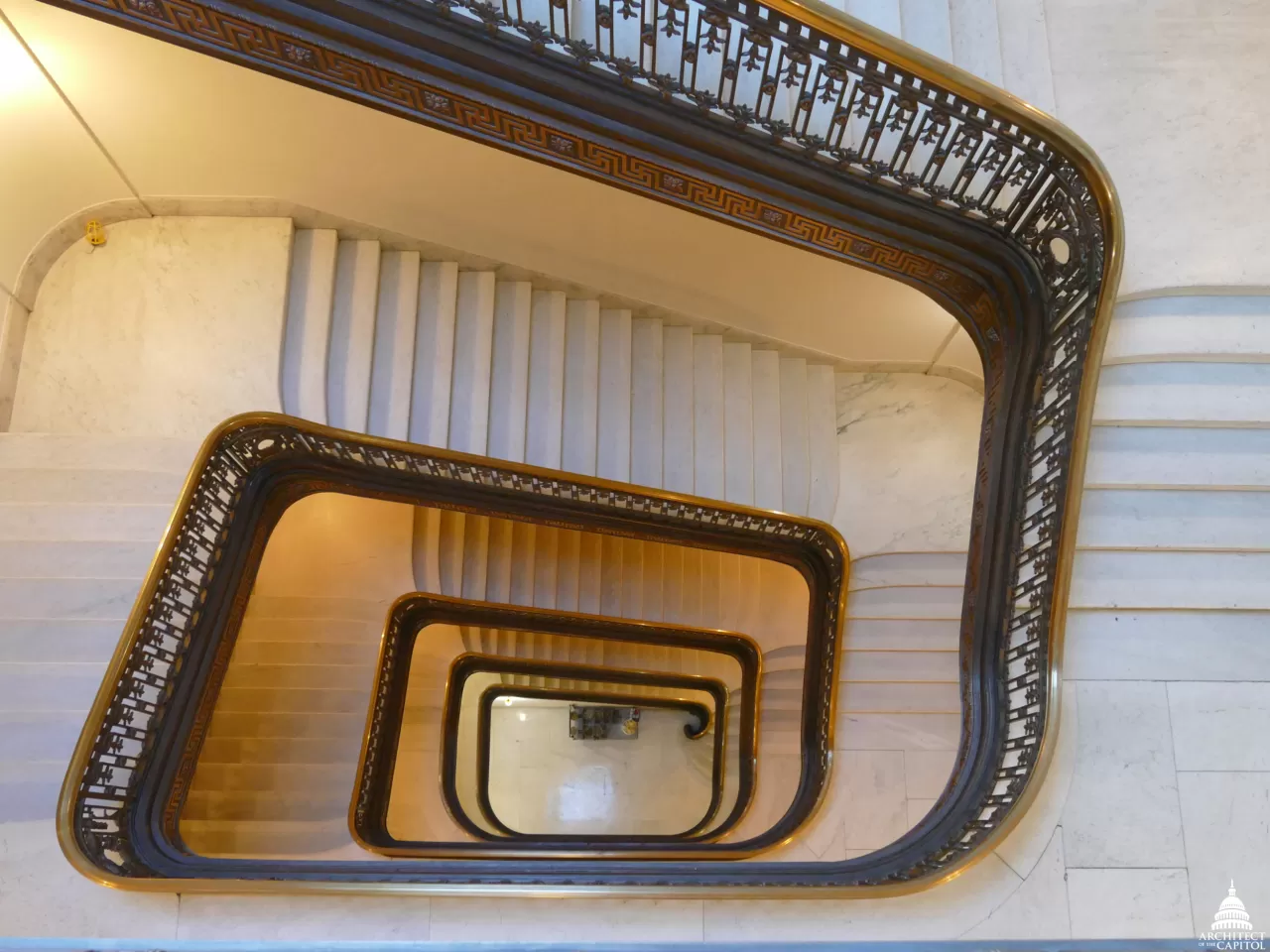
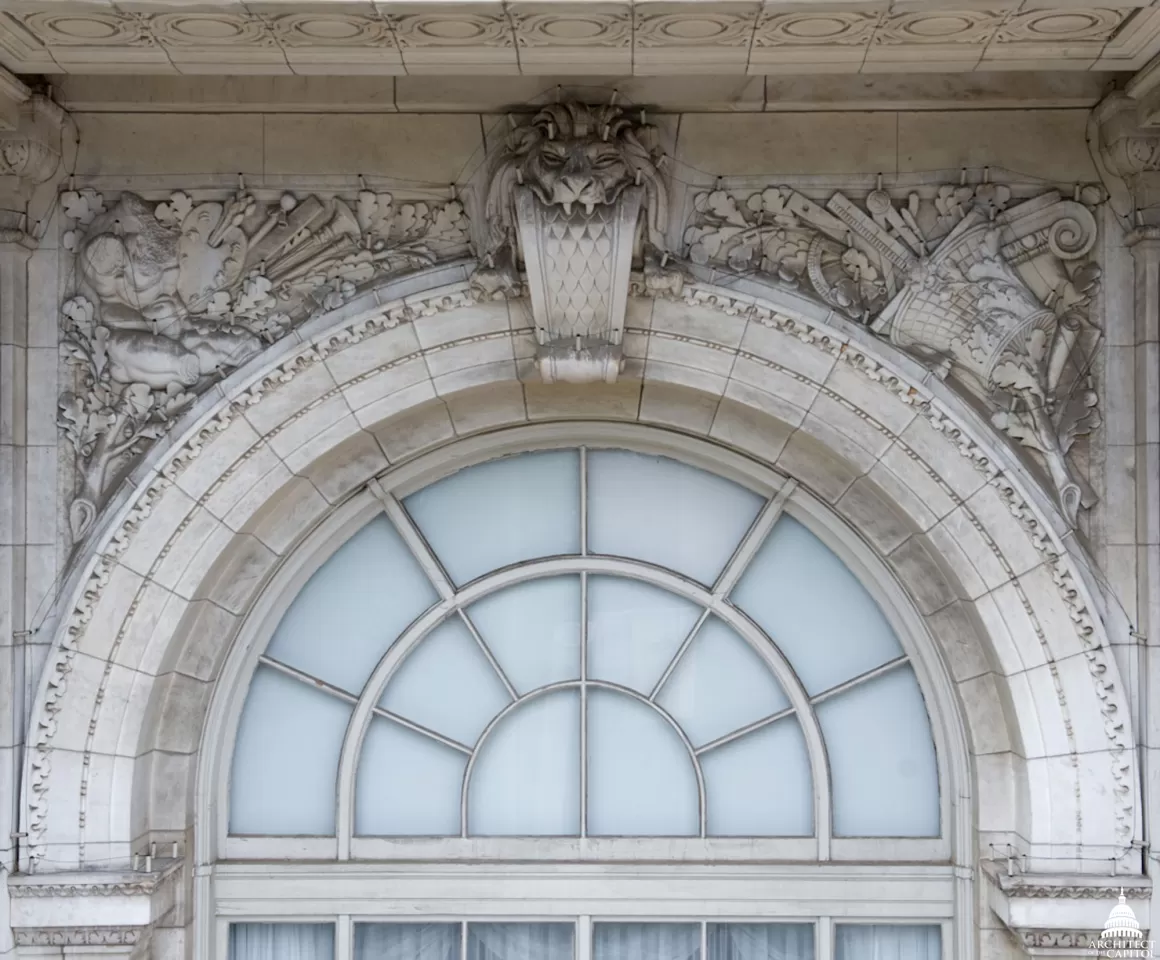
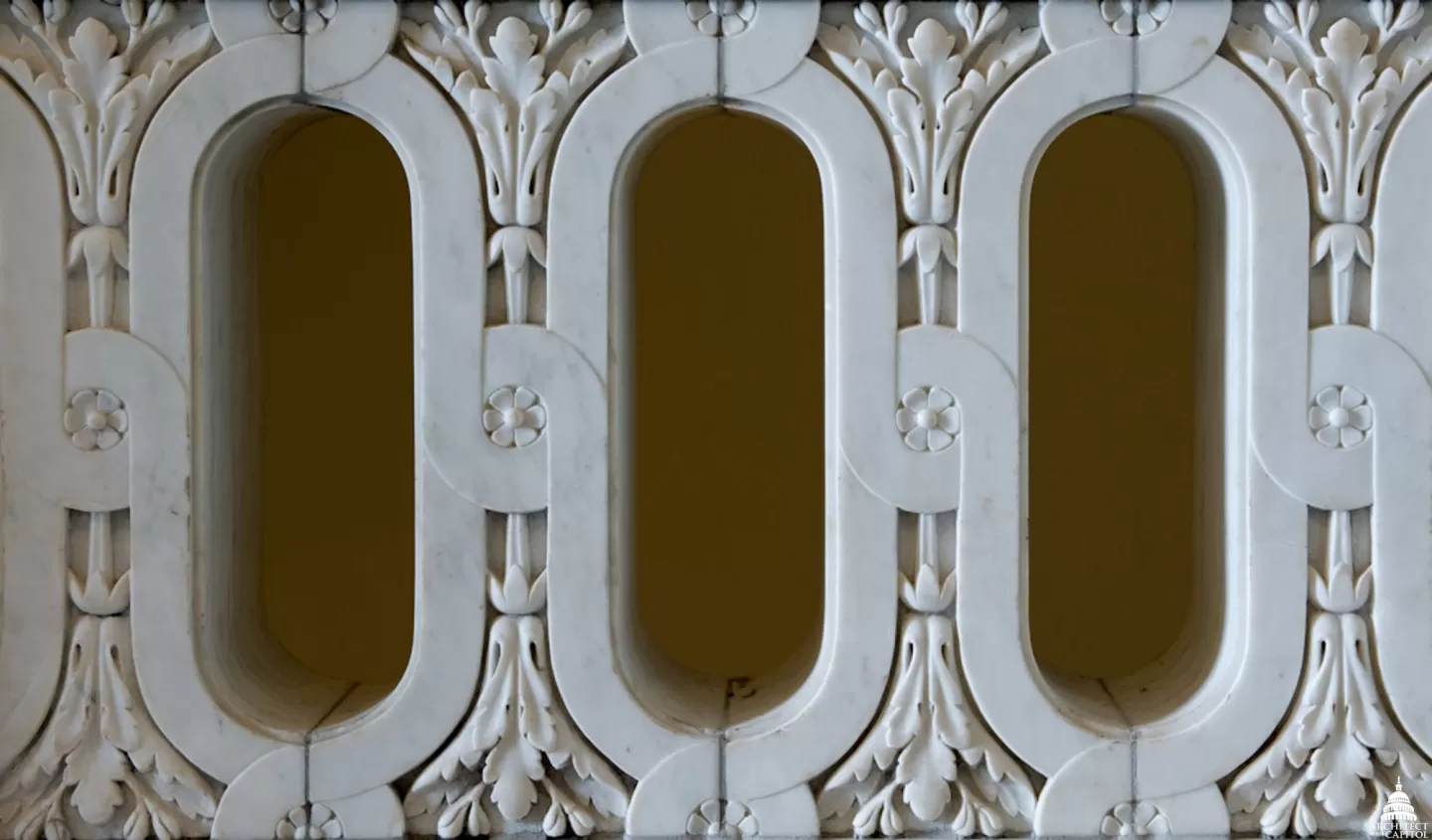
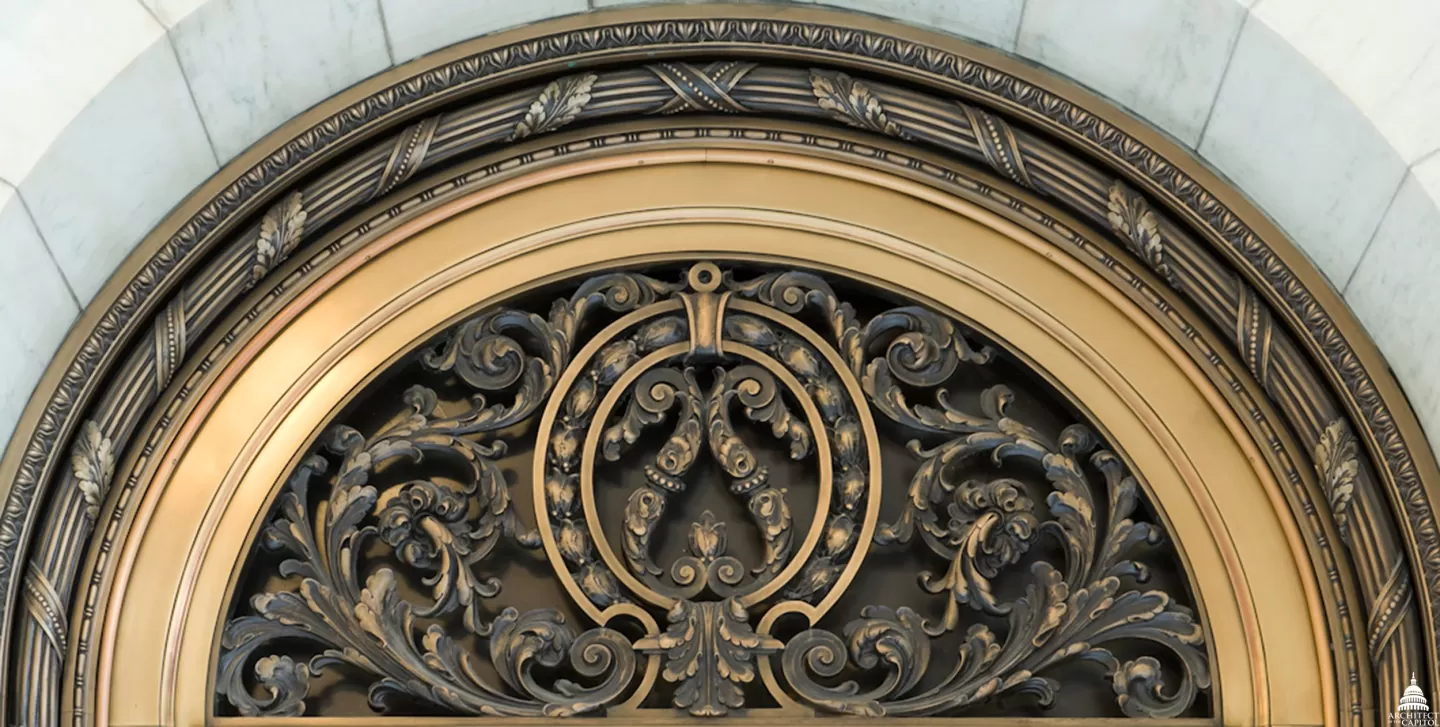
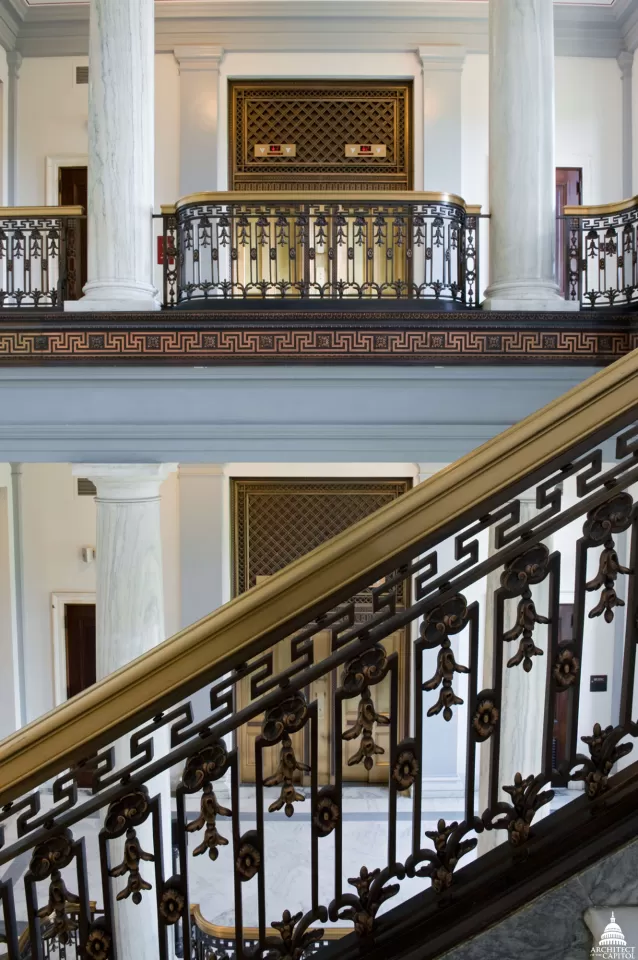
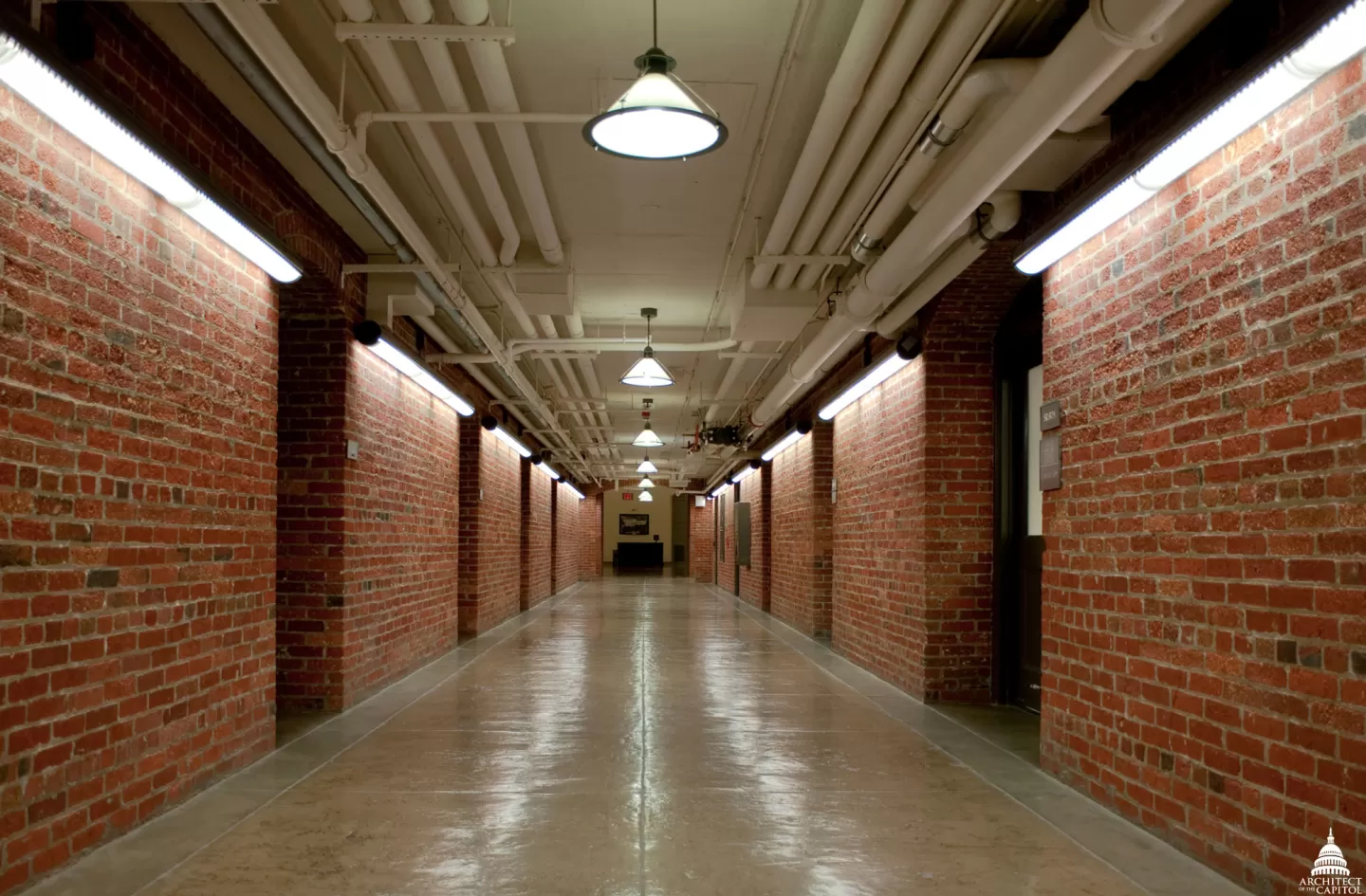
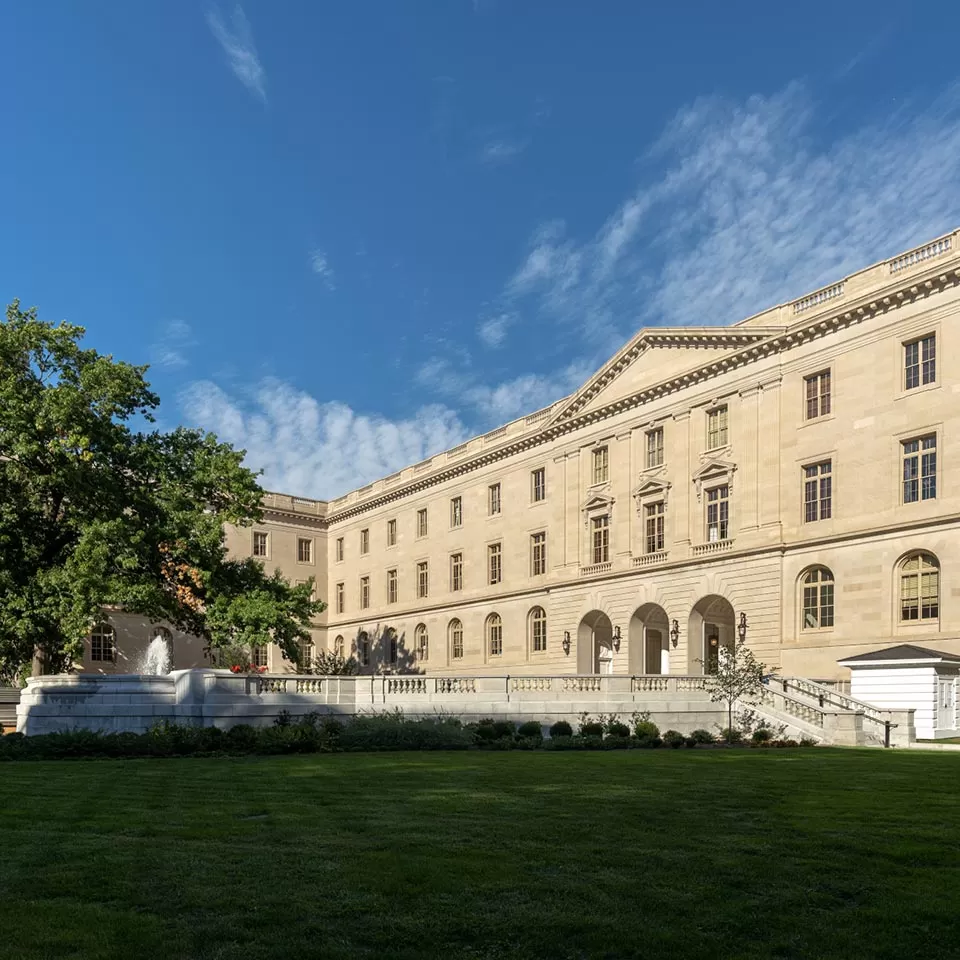
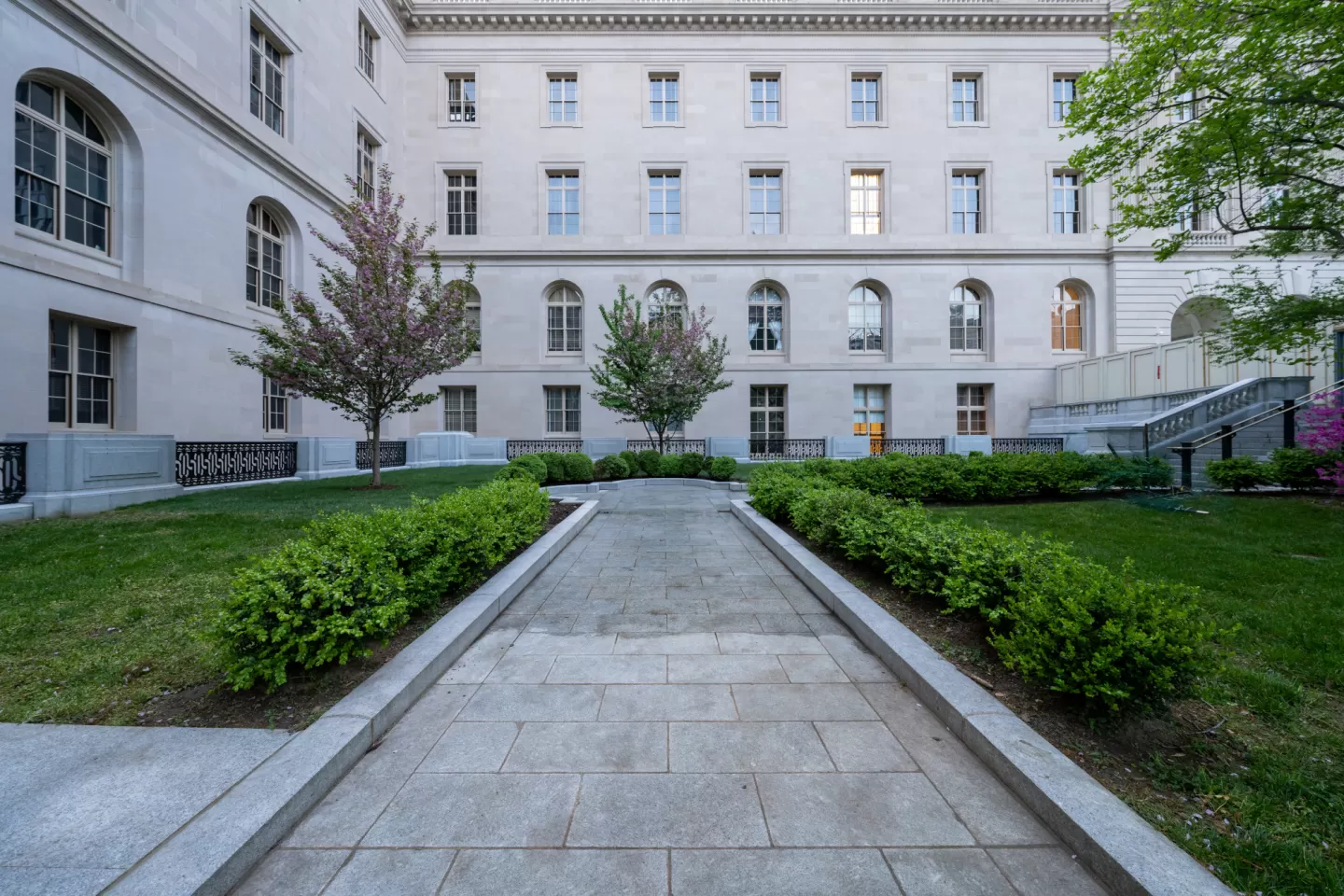
Senate Office Buildings
Prior to its completion, senators and committees struggled to find enough space as their workload, and the number of senators, expanded along with the size of the country. Senators had acquired offices in the nearby Maltby Building in 1891, but that building soon began showing signs of structural failure. The Sundry Civil Appropriations Act (3 Stat 1156) of March 1901 authorized the Architect of the Capitol to draw plans for a fireproof building adjacent to the grounds of the Capitol to be used for offices and storage. On March 3, 1903, a similar bill was enacted authorizing acquisition of a site and construction of the building. The Senate Office Building Commission, composed of Senators Shelby M. Cullum, Jacob H. Gallinger and Henry M. Teller, was established to supervise construction. Subject to the approval of the commission, Architect of the Capitol Elliott Woods oversaw letting of contracts and construction of the building.
The commission chose Square 686, bounded by Constitution Avenue, First Street, Delaware Avenue and C Street NE for the building. Excavation began on May 3, 1905. The problem of disposition of such an enormous amount of soil was solved when the Commission of the District of Columbia agreed that the site of Union Station, then under construction, could be used as a fill area.
In April 1904, on Woods' recommendation, the commission retained the service of the prominent New York architectural firm of Carrère and Hastings as consulting architects. One partner, John Carrère, took charge of the Senate office building project, while Thomas Hastings oversaw the construction of a similar office building for the House of Representatives. The firm had a well-established working relationship with the Architect of the Capitol; they had worked together on the redesign of the Capitol space formerly occupied by the Library of Congress.
Carrère and Hastings intended the House and Senate office buildings to complement the more important Capitol. The restrained classical designs of the office buildings were not meant to compete architecturally with either the Capitol or the Library of Congress. Accordingly, the buildings' heights are limited, and the elevations facing the Capitol grounds are identical and reserved.
At hearings in March 1905, the commission accepted John Carrère's proposal that the exterior of both buildings be faced with white marble. He testified:
I think that these two sides and the Capitol are part and parcel with each other and of each other, and should be in harmony as to design material and purpose and in every other element that enters into the conception.1
For the Russell Building, the Constitution and Delaware Avenue fronts were faced with Vermont marble with a base and terrace of gray granite from New Hampshire. The C Street and later First Street elevations were faced with Georgia marble, while the court fronts were faced with limestone from Bedford, Indiana. The exterior of the Russell Building is classical, clearly reminiscent of the Colonnade du Louvre in Paris. Architecturally, the elevation is divided into two parts: a rusticated base and, above it, a colonnade with an entablature and balustrade. The colonnade with thirty-four Doric columns on Constitution Avenue is echoed by pilasters on the Delaware Avenue facade.
The Guastavino Company used patented techniques to construct a masonry vault in the building. The company brought to the U.S. a tradition of Catalan vault-building with roots in masonry techniques from around the Mediterranean. Multiple layers of thin tile laid with Portland cement in a herringbone pattern create a beautiful arch; more importantly, such vaults are strong and fireproof, quick to construct, and require fewer building materials. The Guastavino Company built a similar vault in the Cannon House Office Building and completed structural tile vaults and a spiral staircase for the Supreme Court building. The vault in the Russell Building supports the weight of the building's Rotunda.
The Russell Rotunda, an area of special architectural interest in the building's interior, is located at the main entrance of the building and has a diameter of 57 feet 4 inches. Eighteen Corinthian columns on a marble arcade support a richly detailed entablature and coffered dome. The oculus of the dome is glazed to flood the Rotunda with natural light.
At the rear of the Rotunda, twin marble staircases lead to the imposing Caucus Room. Noteworthy architectural features of the room are a full entablature and a richly detailed ceiling, ornamented with various classical motifs and highlighted with gold leaf. Carved from white Vermont marble, 12 giant order Corinthian columns and 20 pilasters stand 27 feet high. The room has its original 1910 mahogany benches and settles with carved eagles manufactured by the Francis Bacon Company of Boston. The chandeliers' light gleams through frosted etched glass globes, and crystal prisms hang from the arms. In these public spaces, Carrère and Hastings provided the building with some of the most important and handsome interiors of the early twentieth century.
Topics of Senate hearings and investigations of national significance that have taken place in the Russell Caucus Room include: the sinking of the Titanic (1912), the Teapot Dome Scandal (1923–24), the attack on Pearl Harbor (1941), Kefauver Crime Committee (1950–51), Army vs. McCarthy (1954), conduct of the Vietnam War (1966), Watergate (1974), and the Secret Military Assistance to Iran and the Nicaraguan Opposition (1987). In 2009, Senate Resolution 264 designated the room as the Kennedy Caucus Room in honor of Senators John F. Kennedy, Robert F. Kennedy and Edward M. Kennedy.
The building was officially opened for the 61st Congress on March 5, 1909. There were 98 suites, the Caucus Room, and 8 committee rooms with marble mantels and floors. The building was designed in a U-shape to admit light to inner offices. On each floor the offices were on both sides of a 12-foot-wide corridor. A modern building for its time, it boasted such facilities as a forced-air ventilation system, steam heat, individual lavatories with hot and cold running water and ice water, telephones in every office, and electricity on many circuits. Marble, bronze and plaster were used to "produce permanently substantial results, with the attending minimum charges for upkeep."2 The building also included bathing facilities, a barber shop, a gymnasium, a dining room and café, a post office, and a telephone and telegraph office. Electric vehicles ferried senators through the tunnel connecting the new building to the Capitol; they were replaced by railcars within three years.
Mahogany furniture was designed for the office suites, and a set was ordered for each senator's office: a flat-top desk, a desk chair, two arm chairs, one small chair, an easy chair, a davenport, a rug and a filing cabinet. Senators could also order bookcases. Senators' offices also had marble fireplaces, wood crown molding and baseboards, marble borders on the floors, and nickel or silver lighting fixtures with frosted glass chimney shades. Given a choice of paint color, senators pre-dominantly chose light blue, light green or buff for the walls. A secretary's office had a roll-top desk with chair, a roll-top typewriter desk with chair, a table, two arm chairs and three small chairs. Even in the simpler staff offices, marble thresholds and wood molding was standard. Doors and windows throughout the building had brass fixtures.
Committee rooms generally contained decorative molding, coffered ceilings, and ornamental plaster gold-leaf trim. Light fixtures could have additional crystal prisms added. Pilasters, mantels and baseboards were made of marble.
The growth of staff and committees in the 20 years following the completion of the building in 1909 resulted in renewed efforts to provide the Senate with adequate space. The Senate Office Building Commission directed Architect of the Capitol David Lynn to construct a fourth side to the Russell Building, the First Street wing, in order to add two large committee rooms, 28 suites of offices, single rooms, workshops, and storage space. Consulting architects Nathan Wyeth and Francis P. Sullivan specified the same marble and limestone for the new wing, which was completed in 1933, as for the original building. At the same time, the now-enclosed courtyard was landscaped. The building is 698,921 square feet.
When the Dirksen Building was built, the C Street side of the Russell Building was enhanced. When originally built in 1909, that side of the building faced a residential neighborhood and therefore received no special architectural treatment. With the construction of Union Station and the enlargement of the Capitol Grounds, however, this side of the building became much more visible: it was the first government build-ing seen by those who arrived by train. The Architect of the Capitol noted:
Its severity contrasts unpleasantly with the dignified colonnades that embellish the Capitol building. In order to bring it into harmony with the Capitol and the other public buildings nearby, a colonnade will be constructed . . .3
To further accent this axis, a gatehouse was built at the corner of Delaware Avenue and C Street, with a matching one across the street to emphasize Delaware Avenue as a principal approach to the Capitol from Union Station.
As early as the 1920s, some office suites were reconfigured to include more rooms. When the Dirksen and Hart Buildings were completed in 1958 and 1982, office suites were reconfigured to increase the amount of space each contained. Some senators who moved to offices in the new Dirksen Building brought along the furniture from their Russell Building suites.
The building was named in October 1972 for Senator Richard Brevard Russell, who represented Georgia from 1933 to 1971 (Senate Resolution 296, 92nd Congress, as amended by Senate Resolution 295, 96th Congress). A life-size marble statue of Russell was unveiled on January 24, 1996, for permanent display in the rotunda of the Russell Building. The seven-foot-tall white Italian marble statue is a donation from the Richard B. Russell Foundation in Atlanta, Georgia. The foundation selected sculptor Frederick Hart (1943-1999) to execute the commission. Hart designed the statue to harmonize with the scale and proportions of the surrounding architecture. The pose is based on photographs of Russell, capturing a typical stance with his left hand in his pocket. The proposal to locate the statue in the Russell Building was approved by the Senate Committee on Rules and Administration and the Architect of the Capitol in 1993.
In 2023, the Architect of the Capitol completed restoring the outside of the Russell Building; weathering and age had diminished many of the fine details of the exterior stone. The project preserved the stone, wood windows and glazed doors, and rehabilitated the balcony flooring, balusters, balustrades and roof chimney.
1. Report of the Commission to Direct and Supervise the Construction of the House Office Building, H. Rept. 2291, 61st Cong., 3d sess., 1912, p. 163.
2. The Office Building for the United States Senate, Washington, D.C., n.d., p. 5, Records of the Architect of the Capitol.
3. Report of the Architect of the Capitol for Fiscal Year Ending June 30, 1931, S. Doc. 7, 72nd Cong., 1st sess., (1932), p. 15.

Highlight
Corinthian columns are the most ornate, slender and sleek of the three Greek orders.










Senate Office Buildings